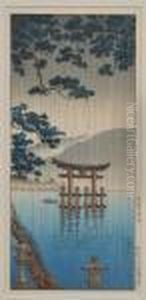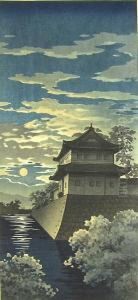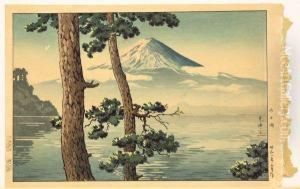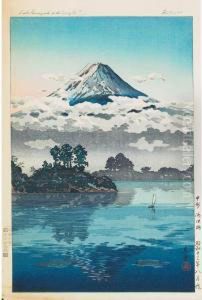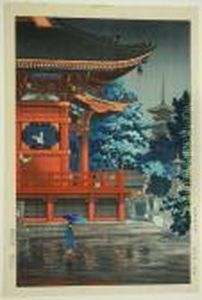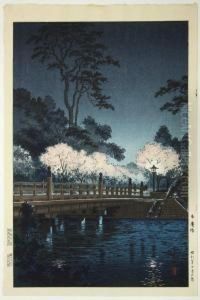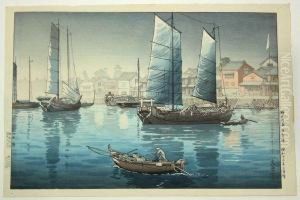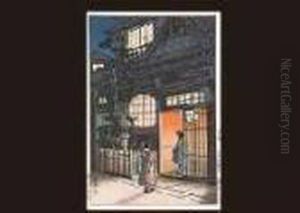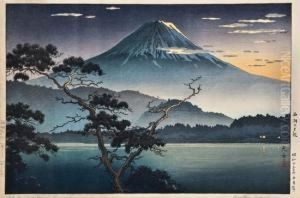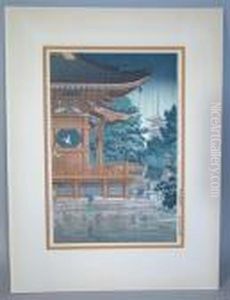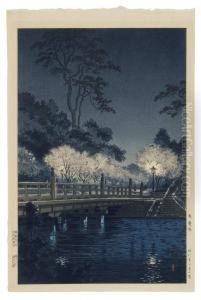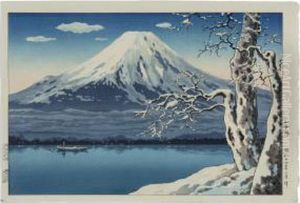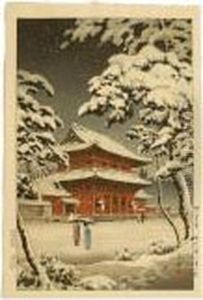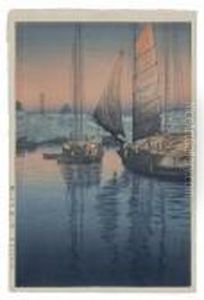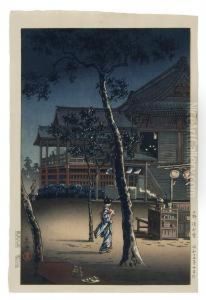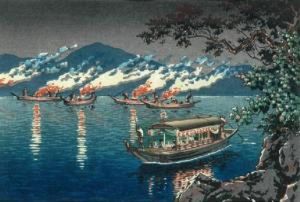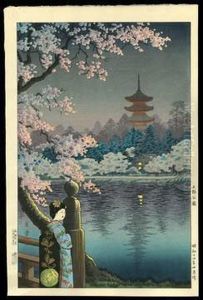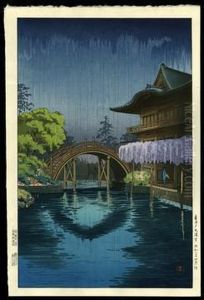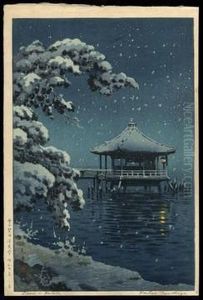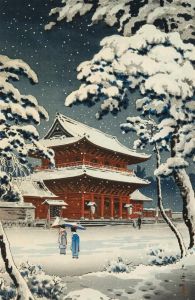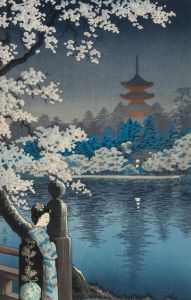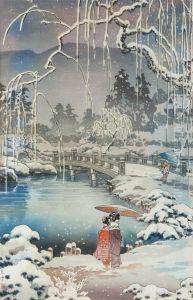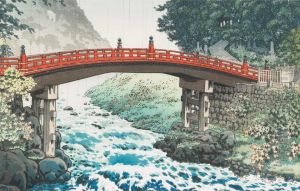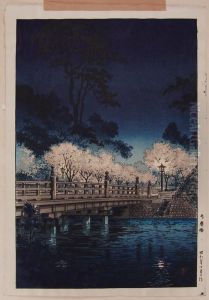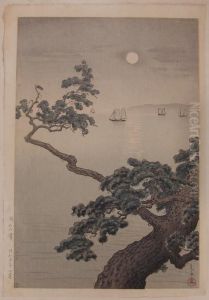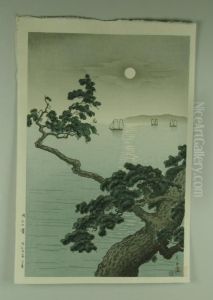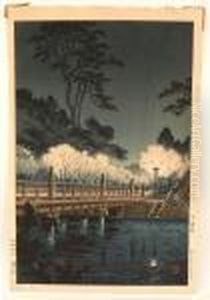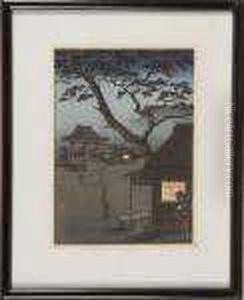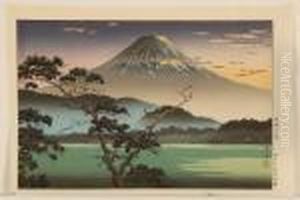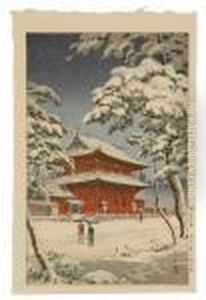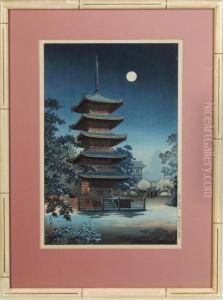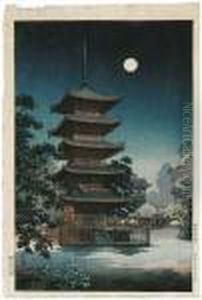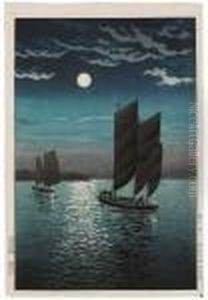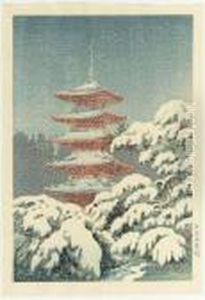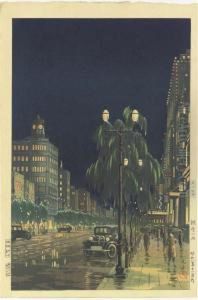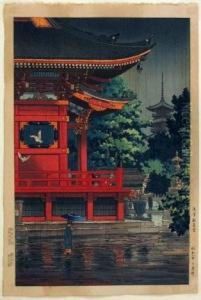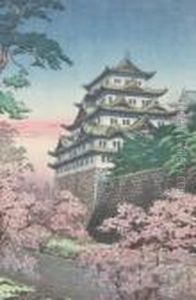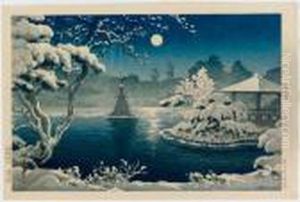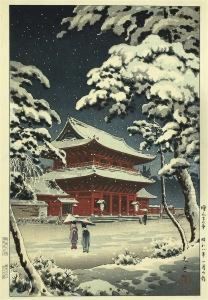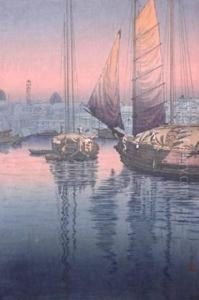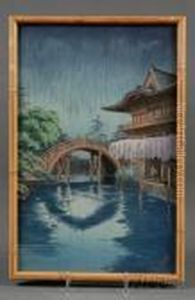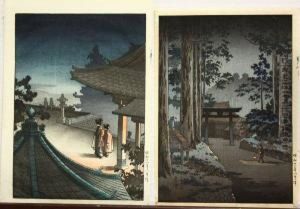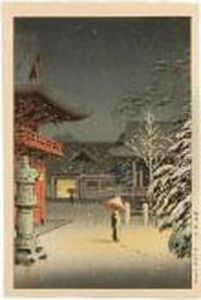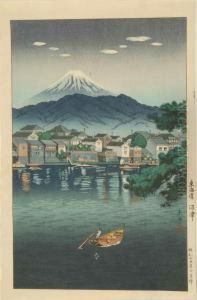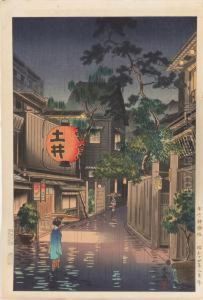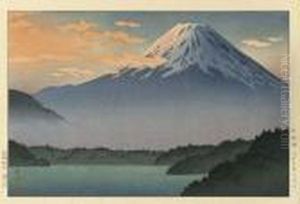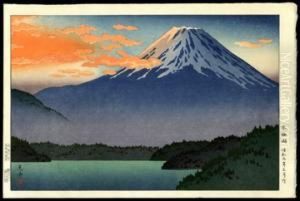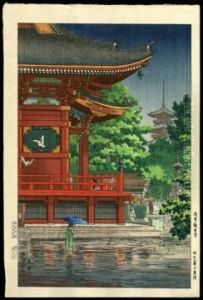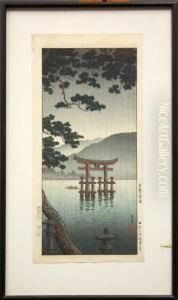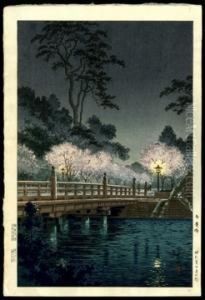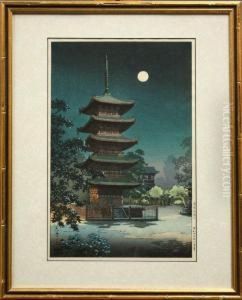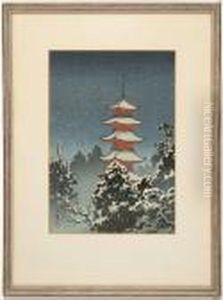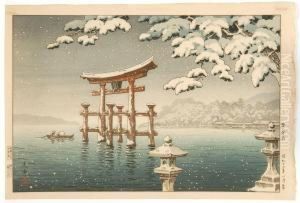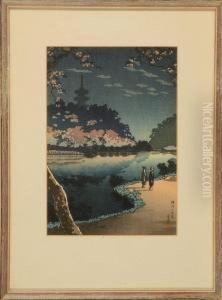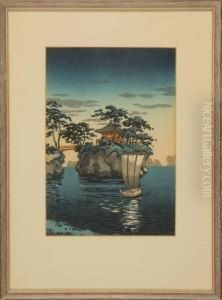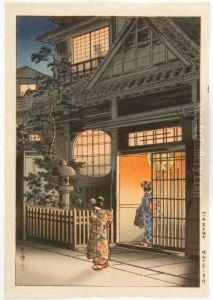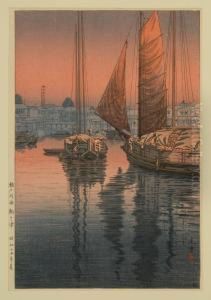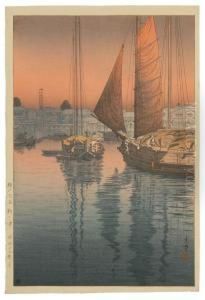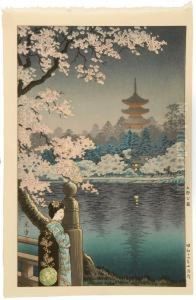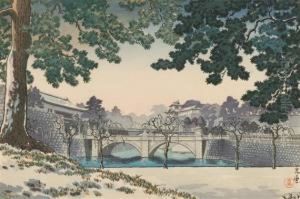Tsuchiya Koitsu Paintings
Tsuchiya Koitsu was a prominent Japanese artist known for his beautiful landscape woodblock prints, particularly in the shin-hanga style, which sought to revitalize traditional ukiyo-e art by integrating Western elements of perspective and light. Koitsu was born on September 23, 1870, in Hamamatsu, Shizuoka Prefecture, Japan. He moved to Tokyo at the age of 15 and began apprenticing for Matsuzaki, a carver of woodblocks for artist Kobayashi Kiyochika, whose influence was pivotal in Koitsu's artistic development.
Koitsu spent almost 20 years working with Kiyochika, from whom he learned composition, lighting, and the depiction of landscapes and figures. Kiyochika's innovative approach to light and shadow in landscapes had a profound impact on Koitsu's style. After the Russo-Japanese War (1904–1905), Koitsu created several prints depicting war scenes, but his main focus was on scenic prints.
The Great Kanto Earthquake in 1923 destroyed Kiyochika's studio, and it was after this event that Koitsu began to work more closely with publishers like Watanabe Shozaburo, who was instrumental in developing the shin-hanga movement. His collaboration with Watanabe led to some of his most famous works, including many picturesque scenes of well-known places in Japan, such as lakes, temples, gardens, and Mount Fuji, often capturing the changing seasons or times of day.
Koitsu's prints are characterized by their rich colors and intricate detail, as well as a masterful use of light and shadow, which gives his images a tranquil and sometimes almost dreamlike quality. His attention to the subtleties of natural light and the mood it evokes is particularly evident in his dawn and sunset scenes.
Despite the popularity of his prints during his lifetime and posthumously, Koitsu's work was often overshadowed by that of his contemporaries, such as Kawase Hasui and Hiroshi Yoshida, who were also key figures in the shin-hanga movement. Tsuchiya Koitsu passed away on November 28, 1949. Today, his work is celebrated for its beauty and craftsmanship and is sought after by collectors of Japanese woodblock prints worldwide.
